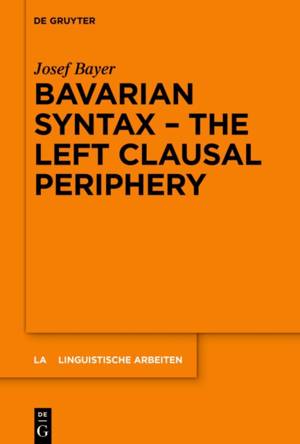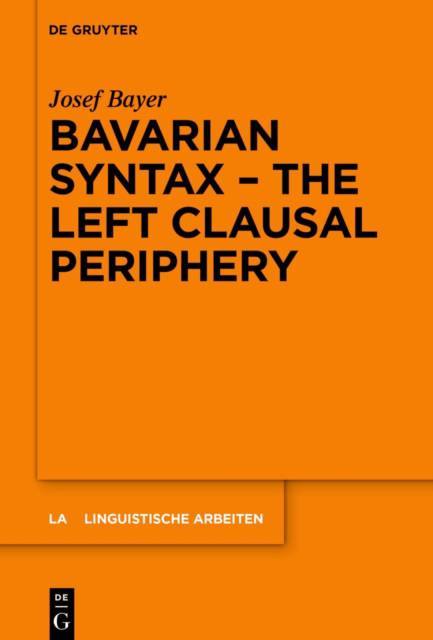
- Afhalen na 1 uur in een winkel met voorraad
- Gratis thuislevering in België vanaf € 30
- Ruim aanbod met 7 miljoen producten
- Afhalen na 1 uur in een winkel met voorraad
- Gratis thuislevering in België vanaf € 30
- Ruim aanbod met 7 miljoen producten
Omschrijving
Bavarian syntax is widely known for its productive "Doubly-Filled COMP" (DFC) property and for the rare phenomenon of inflecting complementizers. It is less widely known that DFC also extends to declaratives. Topicalization out of a preposed CP can leave a gap, with various consequences. DFC is in addition not available as unconditionally as previously thought. Short wh-words seem to blur the traditional division between heads (C) and phrases (wh-XP). As for the inner clausal syntax, Bavarian shows hierarchically organized discourse particles among which the clitic version 'n of the particle denn plays a distinct role. Various tests as well as empirical investigations suggests that 'n has lost its semantic residues and has turned into a wh-agreement marker.
The studies presented in this book are relevant for anyone interested in German morpho-syntax and in syntactic theory, linguistic micro-variation, comparative Germanic and historical linguistics. It touches on various questions concerning the licensing of empty categories, the clausal architecture, word order and the consequences of grammaticalization for the synchronic appearance of the language. As such, the book is relevant for students and researchers of syntactic theory, variation, German(ic) syntax, German(ic) dialectology, comparative linguistics and the development of language.
Specificaties
Betrokkenen
- Auteur(s):
- Uitgeverij:
Inhoud
- Aantal bladzijden:
- 258
- Taal:
- Engels
- Reeks:
- Reeksnummer:
- nr. 589
Eigenschappen
- Productcode (EAN):
- 9783111407791
- Verschijningsdatum:
- 19/05/2025
- Uitvoering:
- Hardcover
- Formaat:
- Genaaid
- Afmetingen:
- 156 mm x 234 mm
- Gewicht:
- 539 g

Alleen bij Standaard Boekhandel
Beoordelingen
We publiceren alleen reviews die voldoen aan de voorwaarden voor reviews. Bekijk onze voorwaarden voor reviews.








